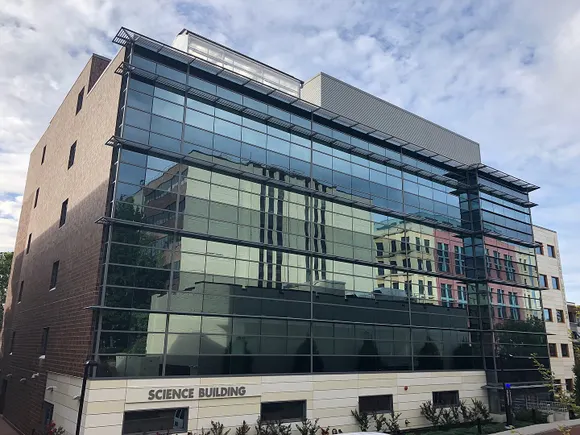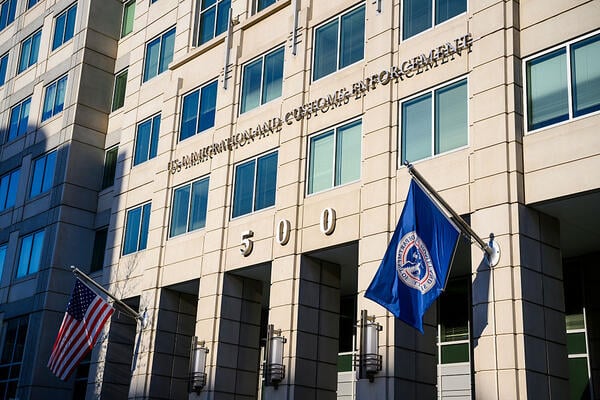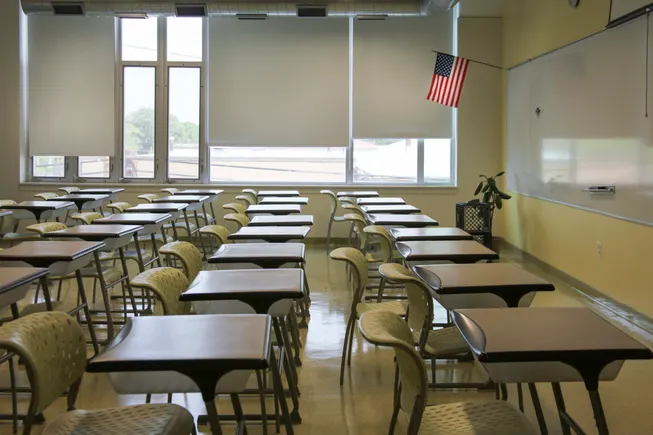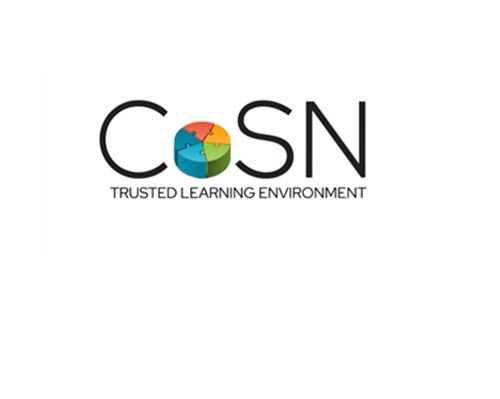Category: Featured
-

Florida A&M Hires DeSantis Ally as President
Florida A&M’s Board of Trustees voted 8 to 4 Friday to hire Marva Johnson as president.
Photo illustration by Justin Morrison/Inside Higher Ed | Jemal Countess/Getty Images for NOBCO | JHVEPhoto/iStock/Getty Images
Following a contentious selection process, Florida A&M University hired a new president with no experience working in higher education but long-standing ties to Republican governor Ron DeSantis.
Marva Johnson, a lobbyist for Charter Communications, faced sharp opposition from students and alumni, who dubbed her “MAGA Marva.” But despite questions about her lack of experience, Florida A&M’s board voted 8 to 4 in a Friday meeting to make her the next president.
Johnson was also criticized by community members and board chair Kristin Harper for her salary demands, which included base pay of $750,000 plus performance bonuses. (Two other candidates requested compensation in the $500,000 range, while one other was negotiable.)
Harper was one of the four trustees who voted against hiring Johnson.
“In an age of merit-based hiring decisions, how can one justify settling for a candidate who does not meet all of the position criteria? Or turning a blind eye to exceptionally qualified candidates?” Harper asked.
She added that FAMU community members “have been very clear” with their feedback.
But other trustees emphasized Johnson’s experience in the political world. Jamal Brown, the Faculty Senate president, who sits on the board, argued that FAMU needed a president who has “access and political connections” to ensure the university’s financial success. In voting for Johnson, he argued that “this moment calls for someone who understands the systems that fund and govern us, because right now our survival depends on how we navigate those systems.”
While Johnson has never worked in higher education in any capacity, she spent eight years on the Florida State Board of Education, including time as chair. During the hiring process, critics highlighted her lack of experience, as did some trustees who voted against her.
Johnson beat out Donald Palm, executive vice president and chief operating officer of Florida A&M, who received four votes. Other candidates included Rondall Allen, provost and vice president for academic affairs at the University of Maryland Eastern Shore, and Gerald Hector, senior vice president for administration and finance at the University of Central Florida.
Palm, the internal candidate, was overwhelmingly endorsed by FAMU’s alumni association.
At a tense meet-and-greet with Johnson on Wednesday, the candidate assured the university community she was “not a Trojan horse” and promised she “would fight and win for FAMU.”
However, critics have argued she failed to articulate a clear vision for the university.
Additional drama accompanied the hire when the board cut Harper out of contract negotiations. While board chairs have traditionally negotiated the contract with incoming presidents at Florida A&M, trustees voted to delegate that responsibility to another member at Friday’s meeting.
“I take personal offense at what is happening,” Harper said during that discussion.
Another controversy arose earlier in the search amid speculation that Johnson was added to a list of three finalists at the last minute. Last month trustee Ernie Ellison called to restart the search, arguing, “There are too many clouds hanging over this process.” He stepped down earlier this month and was quickly replaced by a new DeSantis appointee, who then voted to hire Johnson.
Johnson steps into the FAMU job, which is currently held by an interim, after Larry Robinson, who led the university from 2017 to 2024, resigned amid controversy over a fraudulent gift.
Last spring Florida A&M announced at commencement that the university had received a $237 million donation from Greg Gerami, a relatively unknown businessman with no connection to the institution. Florida A&M appeared to ignore warning signs that Gerami had also pledged $95 million to Coastal Carolina University in 2020, despite having no ties to CCU other than previously dating an employee. Gerami walked that donation back due to what he viewed as disrespect by officials at Coastal Carolina. Gerami’s FAMU donation was later invalidated.
Despite the opposition to her candidacy, Johnson fits the profile favored in recent years by the governing boards at Florida’s public institutions, which have emphasized nontraditional applicants. Johnson is one of multiple presidential hires with ties to DeSantis or the GOP since 2022, when the State Legislature passed a bill allowing universities to shield applicant identities until the end of the hiring process, breaking with a long-standing tradition of making those names public. State lawmakers recently proposed injecting more transparency into searches, but that effort failed.
Other political hires include Ben Sasse, a former Republican U.S. senator from Nebraska, who had a short-lived presidency at the University of Florida; former Florida lieutenant governor Jeanette Nuñez at Florida International University; and former state lawmakers Adam Hasner at Florida Atlantic University and Richard Corcoran at New College of Florida, among several others. Former GOP lawmaker Ray Rodrigues was also hired to lead the State University System of Florida in 2022.
The University of Florida is currently in the process of replacing Sasse with an interim appointed to the job after his abrupt departure. Sole finalist Santa Ono, a traditional academic who left the University of Michigan to take the Florida job, marks a reversal of course compared to recent hires. However, Ono’s candidacy has sparked criticism from some conservative power players.
-

New Jersey City University takes key step to become part of Kean University
Dive Brief:
- New Jersey City University is set to become part of nearby Kean University after the two public institutions signed a letter of intent Thursday to combine by June 2026. The merger would be subject to accreditor and regulatory approvals.
- Under the plan, Kean would assume NJCU’s assets and liabilities and operate the institution as “Kean Jersey City,” the universities said. Executive oversight would fall to Kean’s president, who would appoint a chancellor to lead Kean Jersey City. NJCU will have some representation on Kean’s board of trustees, per the letter.
- NJCU signaled in March that it planned to pursue a merger with Kean after past years of budgetary struggles and a directive from a state-appointed monitor to find a financial partner.
Dive Insight:
In Thursday’s release, Kean and NJCU said that their combination would “preserve NJCU’s mission of serving first-generation, adult and historically underserved students while advancing Kean’s role as the state’s urban research university and a newly designated R2 research university.”
Luke Visconti, chair of the NJCU’s trustee board, said Thursday’s letter of intent “provides an important framework for the detailed discussions that will follow.”
Still to come are full due diligence, a definitive agreement and a detailed outline for combining the two public universities. That process will be collaborative and “rooted in student and community engagement” so that the merger with Kean celebrates the two “distinct cultures” of the universities, NJCU Interim President Andrés Acebo said in a statement.
According to the institutions, an integration planning team with representatives from both universities will begin work immediately, coordinating with New Jersey’s state higher education office. The two universities will develop shared services agreements to streamline operations and boost student success, officials said.
Kean is the larger institution of the two, with 13,352 students in fall 2023, which was down by 5% from five years prior, according to federal data. NJCU, meanwhile, had 5,833 students in 2023, down 10.8% from the year before and 27% lower than 2018 levels.
NJCU’s enrollment declines have contributed to its recent financial turmoil. A little over three years ago, the university declared a full-blown financial crisis after heavy spending on real estate expansions, student services and scholarships failed to reverse its enrollment slowdown and enlarged the university’s expenses.
In 2023, the state comptroller’s office issued a scathing report that accused administrators of failing to fully inform NJCU’s board of the dire financial state, and which also suggested the university “likely” broke federal law by using emergency pandemic funding for an existing scholarship program.
Since then, Acebo has taken the reins, and the state has appointed a monitor to help ensure NJCU rights its finances and operations. State lawmakers also provided $17 million in critical stabilization funding to the institution.
In November, Fitch Ratings lifted the university’s outlook from negative to stable, citing “significant progress toward achieving fiscal balance despite continued pressure on student enrollment.”
-

ICE Warns International Students of More SEVIS Terminations
Immigration officials sent letters to international students on short-term work visas Thursday night, threatening to terminate their legal status in the Student Exchange and Visitor Information System and remove them from the country. The number of affected students is still unknown, but Inside Higher Ed can confirm at least 35.
It’s the first sign that the Trump administration is resuming its campaign to deport student visa holders, weeks after restoring the statuses of thousands of students. ICE recently released an updated policy that significantly expands the agency’s authority to terminate students’ SEVIS status and pave the way for deportation proceedings.
This time, they’re targeting students on Optional Practical Training visas, or OPTs, which allow international postgraduates the opportunity to work in a field relevant to their study on a short-term extension. Students on OPT are allowed a total of 90 days of unemployment every 12 months before falling out of compliance. It’s still not known whether any of the affected students were on a special visa extension known as OPT for STEM, awarded to graduates in high-demand technology, science and engineering fields.
One international student adviser, who spoke with Inside Higher Ed on the condition of anonymity, said 28 of his institution’s students on OPT received the letter in the past day, and he expects that number will grow.
In a copy of one letter received by an international student and obtained by Inside Higher Ed, Immigration and Customs Enforcement warned those who have not reported employment status within 90 days of starting their OPT visa that they must do so in 15 days. If they don’t, the Student Exchange and Visitor Program “will set your SEVIS record to ‘terminated,’” the letter reads, which “may result in the initiation of immigration proceedings to remove you from the United States.”
The letter is nearly identical to those sent by officials during the first Trump administration in 2020. The only difference: Back then, the Student Exchange and Visitor Program was the letter’s sole signatory. This time, ICE and the Department of Homeland Security are also named.
The 2020 letters were sent two years after officials issued an update to designated school officials informing them that the administration had begun a review of OPT students’ employment status to find noncompliant visa holders. But that notice also said SEVP would not automatically terminate students’ SEVIS status for going over the 90-day unemployment limit before notifying students.
It’s not clear whether immigration officials engaged in a review process before beginning to notify students of potential SEVIS terminations this week. Spokespeople for ICE and DHS did not respond to questions in time for publication.
It was also not immediately clear if OPT students’ SEVIS terminations would result in subsequent visa revocations, which are the purview of the State Department. A spokesperson for the State Department wrote in an email that they “cannot preview future visa-related decisions, which are made on a case-by-case basis, based on the individual facts relevant to the case,” and deferred other questions sent by Inside Higher Ed to DHS.
In an internal communication sent to international student advisers and support specialists, NAFSA, an organization of international educators, urged college officials to regularly check the SEVIS database for notices of OPT students’ compliance with “accrued unemployment days” and to reach out to any students who are over the 90-day limit as soon as possible.
Immigration officials began systematically terminating thousands of students’ SEVIS statuses along with their visas in late March, an unprecedented move that threw international student support offices into chaos and left students scrambling to avoid deportation.
Last month, immigration officials restored the SEVIS statuses of more than 5,000 international students after losing dozens of court cases challenging the legality of efforts to revoke foreign students’ legal residency at a breakneck pace.
The anonymous international student adviser said students on OPT often forget to report their employment details before the 90-day deadline. Many are distracted by graduations and finals well after they receive approval for the visa and forget, he said; in other cases, the lapse can be due to technical issues within SEVIS.
Because of that, they’re often given some leeway, and he said he’s never seen or heard of a student having their SEVIS status terminated for not reporting employment details on time, including the last time these letters were sent in 2020. Then again, much of the Trump administration’s treatment of student visa holders is unprecedented, and he’s worried this could be a real danger for them.
“There’s a lot of panic and uncertainty as our students are waiting to see what will happen, and we’re waiting to see if they’ll really go through with it,” he said. “I think this is the real deal.”
-

How much does chronic absenteeism cost communities?
This audio is auto-generated. Please let us know if you have feedback.Dive Brief:
- For each student who is chronically absent in California schools, there’s a $5,630 economic burden to the community, according to a report released Wednesday by the University of Pennsylvania Graduate School of Education’s Center for Benefit-Cost Studies.
- Each expulsion costs $70,870 in social burdens such as increased likelihood of dropping out, said the report, which was developed with the University of California, Los Angeles’ Center for the Transformation of Schools.
- Using state, school and student data, researchers calculated the total economic burdens and gains resulting from factors such as graduation rates, school attendance and disciplinary infractions. To improve those factors and offset burdens, the report calls for more equitable opportunities for student success, as well as efficiency-based reforms like the use of a multi-tiered system of supports framework.
Dive Insight:
Like many other localities, California’s chronic absenteeism rate rose because of the COVID-19 pandemic. In the 2019-20 school year, the state’s chronic absenteeism rate for all students was 10%, compared to 30% in 2021-22, which was the same rate nationally. The report uses a common definition of chronic absenteeism, which is when a student misses 10% of the school year, or about 18 days.
The report also calculates that each suspension costs $27,260 and each disciplinary restraint adds up to $6,040. The economic burden for each student who does not graduate high school is $478,440.
On the other hand, a 3 percentage point increase in California’s high school graduation rate would add almost $10 billion to state coffers and $3 billion in taxpayer savings.
To calculate these financial burdens and gains, researchers used an economic model that accounts for all the resources that are needed or contributed to for each educational status over an individual’s working life.
For example, the lifetime social gain of an 18-year-old who graduates high school is $478,440, or $681,930 if the student enrolls in college, according to the report. A variety of factors are taken into consideration in this calculation, including the estimation of higher earnings with additional education and the assumption of reduced criminal activity, improved health status and less reliance on a social safety net.
A. Brooks Bowden, an associate professor of educational policy at the University of Pennsylvania and director of the Center for Cost-Benefit Studies of Education, said the study’s findings in California are an indication of potential economic burdens nationwide.
“Addressing these challenges can lead to substantial savings and improved educational outcomes across the country,” said Bowden in a statement.
The report also said multi-tiered system of supports holds the promise of efficiency in education, because rather than schools delivering extensive support to all students, the MTSS framework provides resource-intensive supports to students with the highest need, as well as equitable services because interventions are individualized based on data.
The MTSS framework has been used by districts across the country to address stubborn absenteeism rates. This approach — which begins with universal supports and increases the intensity of interventions based on student needs — is also promoted by Attendance Works, a nonprofit that provides school attendance resources.
-

Supporting Student Wellbeing in Uncertain Times
Higher education is operating in a time of rapid change and uncertainty. Changes in federal and state policy, funding, and increasing polarization are reshaping campus environments and profoundly affecting many students’ experiences. As leaders, it is critical to understand how these forces are impacting student wellbeing—and what actions institutions can take to adapt and strengthen their supports for students.
The Action Network for Equitable Wellbeing (ANEW) is a networked community of higher education changemakers working together to advance systems-level transformation to improve student wellbeing. Drawing on the involvement of more than 200 colleges and universities, our experience shows that while there is no single solution, institutions can act quickly and intentionally to strengthen student support using a practical, data-driven, human-centered approach.
Through this collaborative work, we’ve identified three strategies that are helping campuses respond more effectively to the rapidly evolving needs of their students: using real-time disaggregated data, conducting empathy interviews, and building a rhythm of frequent data collection and sense-making.
Collect real-time quantitative data and analyze it thoughtfully
How students are doing can change rapidly as policies and rhetoric shift, availability of external resources change, significant events on campus or in the world occur, and new barriers or supports emerge. Relying on older data (e.g. survey data collected nine months ago) can miss important changes. Without timely insight, decisions may be based on outdated information or an incomplete understanding. Systematically collecting real-time data helps institutions stay aligned with students’ current realities.
To support this kind of real-time data collection, ANEW institutions have used the Wellbeing Improvement Survey for Higher Education Settings (WISHES)—a short survey, available at no cost, that provides institutions with timely and actionable data on a range of outcomes and experiences influencing student wellbeing. WISHES helps institutions monitor student wellbeing and stay responsive to the present moment.
But aggregate data tell only part of the story. To understand how different groups of students are faring, disaggregating data by relevant student characteristics can reveal patterns that may be hidden in campus-wide averages and allow institutions to focus support where it is most needed, such as groups of students who might be disproportionately struggling.
In fall 2023, the University of California, Irvine administered WISHES, disaggregated its data, and found that Middle Eastern students seemed to be experiencing more challenges than their peers in some measures. “Aggregate data really doesn’t tell you anything [about what to do]—you have to disaggregate,” said Doug Everhart, director of student wellness and health promotion at UC Irvine. “In order to find meaning behind the data, you have to follow up and ask questions to dig into the lived experience and the ‘why’. That focus is what makes [the ANEW] approach so useful.” The real-time disaggregated data allowed the team to better understand the Middle Eastern student experience and develop strategies responsive to their needs.
Conduct empathy interviews to develop actionable, human-centered insights
Real-time disaggregated survey data can reveal where differences exist—but it likely won’t explain them. Empathy interview is a method used in diverse sectors and settings to understand what’s behind the patterns in quantitative data. These insights are important for informing what specific changes are needed to better support students.
An empathy interview is a one-on-one session that uses deep listening and responsive prompts to explore the lived experience of an individual on a specific topic such as wellbeing. Empathy interviews uncover holistic and nuanced perspectives about a student’s life—including what they’re facing, what matters to them, and how they navigate challenges and opportunities. Empathy interviews are not formal research, but they offer a structured way for leaders to move beyond assumptions and gain insights that are authentic, revealing, and actionable from those who are most affected.
Katy Redd, executive director of the Longhorn Wellness Center at the University of Texas at Austin, reflected on the value of this strategy, “Going through this process pushed us to confront the gap between how we assume students experience college and what their day-to-day reality actually looks like for low-income students. Listening closely helped us notice invisible norms and structures that many students are expected to navigate without support. It shifted our mindset—away from surface-level solutions and toward deeper questions about how our systems function and for whom.”
Michelle Kelly, assistant vice president for health and wellbeing at the University of Texas at Arlington, described a similar shift in perspective: “There was a moment after our empathy interviews where it just clicked: we’d been asking students to navigate systems we ourselves hadn’t fully mapped. It was humbling—but also motivating. Hearing their stories reminded us that the data isn’t just about trends—it’s about real people trying to make it through college while juggling a hundred other things.”
These interviews, coupled with WISHES data, revealed insights that were difficult to uncover through other methods and have helped institutions think and act more systematically about what’s shaping students’ experiences and outcomes.
Develop a rhythm of frequent data collection and sense-making
Being responsive to student needs isn’t about changing course in response to every complaint—it’s about noticing patterns early and adjusting when needed, which requires more than one-time or yearly data collection. Institutions that build a regular rhythm of frequent data collection and sense-making are better equipped to detect shifts, learn from them, and adapt in ways that support student wellbeing.
WISHES is most effective when administered multiple times per semester over many years. Data collected frequently over time provide helpful context when trying to understand how students are impacted by significant events on campus or in the world. Institutions can better answer questions like: Are students struggling more or less than they were at similar points of the semester in previous years? In times of extraordinary change, it is easy to imagine that students are doing worse than they were previously. Frequent data collection and sense-making allow us to objectively determine if this assumption is true.
ANEW institutions that frequently collect data over time using WISHES have been able to understand in close to real time how large external events—such as the pandemic, October 7, and the shifting political environment—have impacted student wellbeing. Schools have reported that WISHES data enabled them to check their assumptions about the impact these events had on student wellbeing. In some cases, assumptions have been disproven using data, allowing schools to avoid trying to solve nonexistent problems or the wrong problem.
As the University of Maryland reflects, “We’ve administered WISHES 10 times over the past two years and have seen firsthand the benefits of frequent data collection and are excited for the future. We most recently have begun to build a dashboard to display our WISHES metrics over time and democratize these critical insights to a myriad of roles within our campus community, which we hope will lead to more effective support for students across our university.”
In the face of today’s challenges, higher education has a powerful opportunity—and responsibility—to lead with empathy, insight, and action. By embracing a data-driven, student-centered approach, institutions can move beyond assumptions and truly understand what their students need to flourish. The experiences shared by ANEW institutions demonstrate that meaningful change is not only possible but already underway. Now is the time for campuses to lean in, listen deeply, and build the systems that will support every student’s wellbeing.
This post was written by Joanna Adams (Rochester Institute of Technology), Jennifer Maltby (Rochester Institute of Technology), and Allison Smith (New York University), with the co-leadership and insights of hundreds of changemakers contributing to the Action Network for Equitable Wellbeing.
If you have any questions or comments about this blog post, please contact us.
-

Ohio District Awarded CoSN Trusted Learning Environment Mini Seal for Student Data Privacy Practices
Washington, D.C. – CoSN today awarded Delaware Area Career Center in Delaware, Ohio, the Trusted Learning Environment (TLE) Mini Seal in the Business Practice. The CoSN TLE Seal is a national distinction awarded to school districts implementing rigorous privacy policies and practices to help protect student information. Delaware Area Career Center is the sixth school district in Ohio to earn a TLE Seal or TLE Mini Seal. To date, TLE Seal recipients have improved privacy protections for over 1.2 million students.
The CoSN TLE Seal program requires that school systems uphold high standards for protecting student data privacy across five key practice areas: Leadership, Business, Data Security, Professional Development and Classroom. The TLE Mini Seal program enables school districts nationwide to build toward earning the full TLE Seal by addressing privacy requirements in one or more practice areas at a time. All TLE Seal and Mini Seal applicants receive feedback and guidance to help them improve their student data privacy programs.
“CoSN is committed to supporting districts as they address the complex demands of student data privacy. We’re proud to see Delaware Area Career Center take meaningful steps to strengthen its privacy practices and to see the continued growth of the TLE Seal program in Ohio,” said Keith Krueger, CEO, CoSN.
“Earning the TLE Mini Seal is a tremendous acknowledgement of the work we’ve done to uphold high standards in safeguarding student data. This achievement inspires confidence in our community and connects us through a shared commitment to privacy, transparency and security at every level,” said Rory Gaydos, Director of Information Technology, Delaware Area Career Center.
The CoSN TLE Seal is the only privacy framework designed specifically for school systems. Earning the TLE Seal requires that school systems have taken measurable steps to implement, maintain and improve organization-wide student data privacy practices. All TLE Seal recipients are required to demonstrate that improvement through a reapplication process every two years.
To learn more about the TLE Seal program, visit www.cosn.org/trusted.
About CoSN CoSN, the world-class professional association for K-12 EdTech leaders, stands at the forefront of education innovation. We are driven by a mission to equip current and aspiring K-12 education technology leaders, their teams, and school districts with the community, knowledge, and professional development they need to cultivate engaging learning environments. Our vision is rooted in a future where every learner reaches their unique potential, guided by our community. CoSN represents over 13 million students and continues to grow as a powerful and influential voice in K-12 education. www.cosn.org
About the CoSN Trusted Learning Environment Seal Program The CoSN Trusted Learning Environment (TLE) Seal Program is the nation’s only data privacy framework for school systems, focused on building a culture of trust and transparency. The TLE Seal was developed by CoSN in collaboration with a diverse group of 28 school system leaders nationwide and with support from AASA, The School Superintendents Association, the Association of School Business Officials International (ASBO) and ASCD. School systems that meet the program requirements will earn the TLE Seal, signifying their commitment to student data privacy to their community. TLE Seal recipients also commit to continuous examination and demonstrable future advancement of their privacy practices. www.cosn.org/trusted
About Delaware Area Career Center Delaware Area Career Center provides unique elective courses to high school students in Delaware County and surrounding areas. We work in partnership with partner high schools to enhance academic education with hands-on instruction that is focused on each individual student’s area of interest. DACC students still graduate from their home high school, but they do so with additional college credits, industry credentials, and valuable experiences. www.delawareareacc.org
Connect With Us
Latest posts by eSchool News Staff (see all) -

HESA’s AI Observatory: What’s new in higher education (May 16, 2025)
Highlight from a Canadian PSI
New AI Research Assistant available in library search
April 25th, 2025. University of Manitoba.
UManitoba recently announced the launch of their new AI Research Assistant (beta), a GenAI tool to help with library searches and to help gather initial insights on research topics. Functions include providing summarized responses to research questions, recommending relevant publications from the libraries’ collections, and suggesting additional question prompts to expand the research topic.
AI Policy
Dion-Viens, Daphnée. Le Journal de Montréal. April 24th, 2025.
“Québec a annoncé l’automne dernier la création d’une instance de concertation sur l’intelligence artificielle en enseignement supérieur, dont les travaux ont débuté en octobre. Le bilan des travaux devait être présenté en avril, mais cet échéancier a été repoussé à la fin de l’été. Un cadre de référence pour l’intégration de l’IA dans les cégeps et les universités devrait être présenté à la rentrée. La Fédération nationale des enseignantes et enseignants du Québec (FNEEQ-CSN) déplore ce report. Le temps presse puisque plusieurs établissements attendent ces lignes directrices pour agir. »
Universities have a chance to lead in shaping AI’s future
Kaya-Kasikci, S. et al. University World News. April 23th, 2025.
The authors of a recent academic analysis of national AI policies share their thoughts about how the diverse AI policy approaches and perspectives around the world might impact the future of post-secondary education.
Transformation of Education
Are You Ready for the AI University?
Latham, S. The Chronicle of Higher Education. April 8th. 2025.
“What’s happening in higher education today has a name: creative destruction. The economist Joseph Schumpeter coined the term in 1942 to describe how innovation can transform industries. That typically happens when an industry has both a dysfunctional cost structure and a declining value proposition. Both are true of higher education.“
AI is unable to outpace higher education
Lumina Foundation. April 29th, 2025.
“Leaders from academia, economic development, and industry discuss how universities and colleges are advancing research and equipping students with the skills to lead in an AI-powered future. From addressing social inequities to preparing cities for the economy of the future, the conversation highlights the transformative potential of AI when nurtured within higher education, and the tradeoffs that must be made in an education system wired for the past.“
Gen Z says AI has made their college degrees irrelevant
Torres, R. April 29th, 2025. Higher Ed Dive.
“The ongoing push to deemphasize college degree requirements in job postings has led half of Gen Z job seekers to view their degrees as a waste of time and money”, according to a recent Indeed report that surveyed 772 US adulted workers and job seekers with an associate’s degree or higher.
Workforce readiness
Labor Market Disruption and Policy Readiness in the AI Era
McGrath, E. and Burris, M. The Century Foundation. April 29th, 2025.
Policy recommendations to prepare current and future workforce for AI.
Teaching and Learning
Here is how experiential learning can save colleges from AI
McKeen, S. University Business. April 30th, 2025.
“If knowledge is now universally accessible, what remains of higher education’s value? (…) The traditional college lecture is obsolete. Why should students pay thousands in tuition to sit in a lecture hall when AI can summarize complex theories in seconds? The world no longer rewards passive knowledge absorption. Employers want graduates who can think critically, collaborate effectively, and apply knowledge in complex, unpredictable environments. Experiential learning isn’t just an educational trend— it’s a survival strategy.“
Is AI Enhancing Education or Replacing It?
Shirky, C. The Chronicle of Higher Education. April 29th, 2025.
“The fact that AI might help students learn is no guarantee it will help them learn. […] The teacher can advance learning only by influencing the student to learn.Faced with generative AI in our classrooms, the obvious response for us is to influence students to adopt the helpful uses of AI while persuading them to avoid the harmful ones. Our problem is that we don’t know how to do that.“
Teaching Writing in the Age of AI
Mintz, S. Inside Higher Ed. May 2nd, 2025.
« As artificial intelligence becomes increasingly capable of generating polished, grammatically correct text that meets academic standards, educators face a critical challenge: How can we teach students to write authentically and effectively? » This author talks about the challenges of teaching writing in the AI era, and provide tips on how to move beyond these challenges.
3 Laws for Curriculum Design in an AI Age
Chaudhuri, A. and Trainor, J. Inside Higher Ed. April 30th, 2025.
The authors share « a framework for thinking about how to address AI technology in the curriculum at all levels, from the individual classroom to degree-level road maps, from general education through graduate courses. »
When GenAI resets the assessment baseline
Jones, C. Times Higher Education. April 29th, 2025.
A visiting lecturer at Regent’s University London, Kingston University and more shares how he reassessed his assignment to mitigate students using AI to do all the work for them. His initial plan was to have ChatGPT create a « baseline » output against which he could mark his students assignments, but he was surprised to realize that the ouptut was better than most undergraduate students would have delivered. He had to review his approach, and shares his strategy in this article.
Research
AI Summary ‘trashed author’s work’ and took weeks to be corrected
Ross, J. Times Higher Education. April 24th, 2025.
AI research summaries ‘exaggerate findings’, study warns
Ross, J. Times Higher Education. April 16th, 2025.
« Dutch and British researchers have found that AI summaries of scientific papers are much more likely than the original authors or expert reviewers to ‘overgeneralise’ he results. (…) AI summaries – purportedly designed to help spread scientific knowledge by rephrasing it in ‘easily understandable language’ – tend to ignore ‘uncertainties, limitations and nuances’ in the research by ‘omitting qualifiers’ and ‘oversimplifying’ the text. Read the academic paper here.
AI Literacy
Using peer networks to integrate AI literacy into liberal arts
McMurtrie, B. The Chronicle of Higher Education. April 24th, 2025.
Read how an associate professor of anthropology at the University of Texas at San Antonio is teaching students about effective AI use.
Schroeder, R. April 30th, 2025. Inside Higher Ed.
« As we approach May, alarm bells are ringing for all colleges and universities to ensure that AI literacy programs have been completed by learners who plan to enter the job market this year and in the future. »
-

Unibuddy launches AI tool to boost student engagement
Unibuddy, a higher education peer-to-peer engagement platform, has officially launched Assistant – an AI tool designed to support large-scale, authentic student-led conversations.
Following a successful beta phase, the tool is now fully live with 30 institutions worldwide and delivering impressive results: tripling student engagement, cutting staff workload significantly, and maintaining over 95% accuracy.
As universities face increasing pressure from tighter budgets and rising student expectations, Unibuddy said its Assistant tool offers a powerful solution to scale meaningful engagement efficiently, combining the speed of AI with the authenticity of real student voices.
- 65,000 unique students have used Assistant
- 100,000+ student questions answered automatically without requiring manual intervention
- 125% increase in students having conversations
- 60% increase in lead capture
- five hours saved per day for university staff
“Today’s students demand instant, authentic and trustworthy communication,” said Diego Fanara, CEO at Unibuddy. “Unibuddy Assistant is the first and only solution that fuses the speed of AI with the credibility of peer-to-peer guidance – giving institutions a scalable way to meet expectations without sacrificing quality or trust.”
Unibuddy has partnered with more than 600 institutions globally and has supported over 3,000,000 prospective students through the platform. As part of this extensive network, it regularly conducts surveys to uncover fresh insights. Although chatbots are now common in higher education, survey findings highlight key limitations in their effectiveness:
- 84% of students said that university responses were too slow (Unibuddy Survey, 2025)
- 79% of students said it was important that universities balance AI automation (for speed) and human interaction (for depth) while supporting them as they navigate the decision-making process (Unibuddy Survey, 2025)
- 51% of students say they wouldn’t trust a chatbot to answer questions about the student experience (Unibuddy Survey, 2024)
- 78% say talking to a current student is helpful — making them 3.5x more likely to trust a peer than a bot (Unibuddy Survey, 2025)
- Only 14% of students felt engaged by the universities they applied to (Unibuddy Survey, 2025)
Unibuddy says these finding have shaped its offering: using AI to handle routine questions and highlight valuable information, while smoothly handing off to peer or staff conversations when a personal, human connection is needed.
Buckinghamshire New University used Unibuddy Assistant to transform early-stage engagement – generating 800,000 impressions, 30,000 clickthroughs, and 10,000+ student conversations in just six months. The university saved over 2,000 staff hours and saw 3,000 referrals to students or staff.
Today’s students demand instant, authentic and trustworthy communication
Diego Fanara, UnibuddyMeanwhile the University of South Florida Muma College of Business reported over 30 staff hours saved per month, with a 59% click-to-conversation rate and over a third of chats in Assistant resulting in referrals to student ambassador conversations.
And the University of East Anglia deployed Assistant across more than 100 web pages, as part of the full Unibuddy product suites deployment of peer-to-peer chat, with student-led content contributing to a 62% offer-to-student conversion rate compared with 34% of those who didn’t engage with Unibuddy.
-

FIRE and Cosmos Institute launch $1 million grant program for AI that advances truth-seeking
AUSTIN, Texas, May 16, 2025 — The Foundation for Individual Rights and Expression (FIRE) and the Cosmos Institute today announced the Truth-Seeking AI Grants Program, a new $1 million initiative to fund open-source projects that build freedom into the foundations of AI, rather than censorship or control.
Truth-seeking AI: Why it matters
Truth-seeking AI is artificial intelligence built to expand the marketplace of ideas and sharpen human inquiry — not replace it.
AI already drafts our sentences, sorts our inbox, and cues our next song. But the technology is advancing rapidly. Soon, it could determine which ideas ever reach our minds — or form within them. Two futures lie ahead, and the stakes couldn’t be higher.
In one, AI becomes a shadow censor. Hidden ranking rules throttle dissent, liability fears chill speech, and flattering prompts dull judgment until people stop asking “why.” That is algorithmic tyranny.
In the other, AI works as a partner in truth-seeking: it surfaces counter-arguments, flags open questions, and prompts us to check the evidence and our biases. Errors are chipped away, knowledge grows, and our freedom — and habit — to question not only survives but thrives.
To ensure we build AI tools and platforms for freedom, not control, Cosmos and FIRE are putting $1 million in grants on the table to ensure the future of AI is free.
“AI guides a fifth of our waking hours. The builders of these systems now hold the future of free thought and expression in their hands. We’re giving them the capital, computing resources, and community they need to seize that opportunity,” said Brendan McCord, founder and chair of Cosmos Institute.
“The First Amendment restrains governments, but the principles of free speech must also be translated into code. We’re challenging builders to do exactly that and prioritize freedom over control,” said Greg Lukianoff, president and CEO of FIRE.
“AI can already steer our thoughts. The future is AI that expands them, not controls them,” added Philipp Koralus, founding director, Oxford HAI Lab and Senior Research Fellow at Cosmos Institute.
To read more about why we need to bake principles of free thought and expression into AI code, check out Brendan McCord, Greg Lukianoff, and Philipp Koralus’s piece at Reason.
How it works
- Grant pool: $1 million (cash + compute); compute credits are from Prime Intellect, a platform for open, decentralized AI development
- Typical award: $1k – $10k fast grants; larger amounts considered for standout ideas
- Rolling review: decisions in ~3 weeks; applications open May 16 at CosmosGrants.org/truth
- Sprint timeline: 90 days to ship a working prototype
- Community: access to a vetted network of builders, mentors, and advisors at the AI and philosophy frontier
- Showcase: Top projects funded by Nov 1, 2025 will be invited to demo at the Austin AI x Free Speech Symposium in December 2025; selection is competitive and at the program’s discretion
What we’re funding
- Marketplace of Ideas — projects that preserve viewpoint diversity and open debate.
- Promoting Inquiry — systems that actively provoke new questions, surfacing counter-arguments and open issues that require more study.
- Bold New Concepts — any approach that pushes AI toward the role of truth-seeking partner.
Illustrative projects:
We’re focused on prototypes that translate philosophy to code — embedding truth-seeking principles like Mill’s Trident and Socratic inquiry directly into open-source software.
Possible projects could include:
- AI challenger that pokes holes in your assumptions and coaches you forward
- An open debate arena where swappable models argue under a live crowd score
- A tamper-proof logbook that records every answer on a public ledger.
About the Foundation for Individual Rights and Expression (FIRE)
The Foundation for Individual Rights and Expression (FIRE) is a nonpartisan, nonprofit organization dedicated to defending and sustaining the individual rights of all Americans to free speech and free thought — the most essential qualities of liberty. FIRE educates Americans about the importance of these inalienable rights, promotes a culture of respect for them, and provides the means to preserve them. Learn more at www.thefire.org.
About Cosmos Institute
Cosmos Institute is a 501(c)(3) academy for philosopher-builders — technologists who unite deep reflection with practical engineering. Through research, fellowships, grants, and education, Cosmos advances human flourishing by translating philosophy to code across three pillars: truth-seeking, decentralization, and human autonomy. The Institute supported the creation of the new Human-Centered AI Lab at the University of Oxford, the first lab dedicated to embedding flourishing principles in open-source AI. Learn more at www.cosmos-institute.org.
Media Contact
Karl de Vries, Director of Media Relations, FIRE
karl.de.vries@thefire.org | +1 215-717-3473


